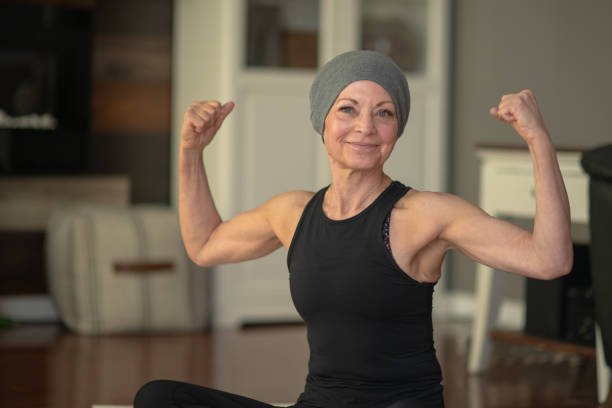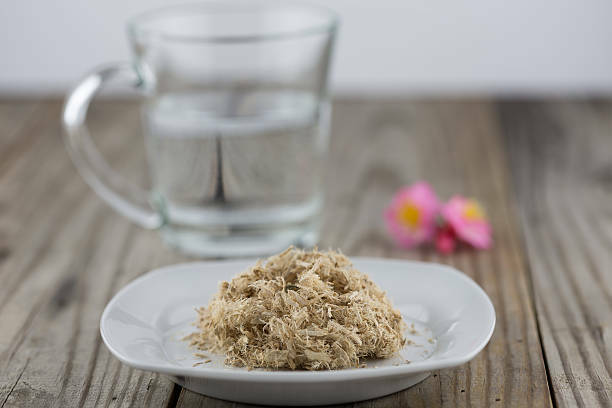Revised December 2, 2023
When the battle with cancer leads you through the challenging path of chemotherapy, completing your treatment marks both an end and a beginning. It signifies the end of a rigorous routine centered around hospital visits, drugs, and coping with side effects. But more importantly, it marks the beginning of a new journey: healing after chemo.
This phase is an integral part of the cancer journey, often overshadowed by medical treatments. Yet, it’s a time of recovery and renewal, an opportunity to focus on rebuilding your health and restoring your well-being. As someone who has navigated this path, I want to share my insights on natural strategies for recovery and healing after chemo.
It’s the dawn of a new day. Finally, you’ve completed your chemo treatments and are ready to step onto the path of recovery. While chemo has played a crucial role in combating your cancer, it often leaves lingering effects. Addressing these effects naturally and holistically is essential to your healing journey.

Lingering After-Effects of Chemotherapy
Chemotherapy, while effective in combatting cancer, can leave a series of lingering side effects in its wake that can affect the quality of life. These vary from person to person, but some commonly reported after-effects include fatigue, cognitive changes (commonly referred to as ‘chemo brain‘), neuropathy (nerve damage leading to tingling or numbness), and alterations in gut health, such as changes in appetite, taste, and digestive function. While unsettling, these effects are part of the body’s response to the chemotherapy drugs.
As a cancer survivor, I, too, faced these challenges, with gut health being a primary concern. Unfortunately, my gut was a disaster after weeks of heavy antibiotics and months of chemo. However, the strategies I used to nurture it back to health have been instrumental in my recovery, and they form the crux of the advice I share with you today.
The Role of the Gut in Recovery
The gut, often called our second brain, is a powerhouse organ that plays a central role in our overall health. It is the site of nutrient absorption, immune response, and even the production of neurotransmitters that regulate mood.

During chemotherapy, the heavy onslaught of the chemo drugs can significantly alter the gut’s microbiota, leading to digestive issues, malnutrition, and a weakened immune system. This can further exacerbate post-chemo side effects and hamper the recovery process. Healing your gut naturally after chemotherapy, therefore, becomes pivotal to recovery.
Clinical studies have delved into the benefits of dietary changes, probiotics, and prebiotics for restoring gut health post-chemo. A diet rich in fruits, vegetables, whole grains, lean proteins, and healthy fats can supply the essential nutrients for gut repair and overall health.
In addition, probiotics, which are beneficial bacteria, have been found to help balance gut microbiota. Foods like yogurt, kefir, sauerkraut, and kimchi are rich in these friendly bacteria. On the other hand, prebiotics are the food for these bacteria. They are found in bananas, asparagus, onions, and whole grains. Together, probiotics and prebiotics work to maintain a healthy gut environment.
A Personal Journey of Healing My Gut After Chemo
My personal experience with healing my gut after chemo was a transformative journey. Before I started chemo, I underwent a colectomy, a surgical procedure that involved removing half of my colon. Following the surgery, I faced an unexpected challenge – an infected incision. I spent weeks on heavy antibiotics to treat the infection. Once it was under control, I began a 4-month chemotherapy regimen. The combination of antibiotics and chemo left my gut in chaos.
To manage my gut issues, I initially adopted a FODMAP diet to minimize digestive symptoms by limiting high-FODMAP foods. However, despite adhering to a FODMAP diet, I still had gut issues. I realized I needed a different approach to address my unique needs, leading me to consult a holistic nutritionist.
The nutritionist recommended a regimen that focused on restoring my gut health. This included a daily dose of probiotics to rebalance the beneficial bacteria in my gut, which antibiotics and chemo had disrupted. I also started taking slippery elm, a herb known for its soothing properties on the digestive system.

The results were nothing short of miraculous. Within two weeks of starting this new regimen, I felt a profound change in my gut health. It seemed almost unbelievable, but my gut was healing. As a result, I could finally enjoy meals without the dread of digestive issues.
However, it’s important to note that while the initial recovery was swift, full recovery took longer. For example, my digestion took about six months to stabilize completely. This period taught me that healing is a process – it involves ups and downs, quick victories, and slow, steady improvements.
My Gut Health Today – Nearly Two Years Post -Chemotherapy
As I approach the two-year mark since completing chemotherapy, I find it important to share an update on my gut health journey, a road that’s been both challenging and enlightening. While I am grateful for the overall improvement in my health, I continue to navigate some persistent gut issues, primarily concerning digestion and bloating.
The journey has led me to modify my diet significantly. Following removing the right side of my colon, I realized that certain foods were no longer agreeable to my digestive system. Salads, cabbage, apples, raw cruciferous vegetables, and fried foods have been crossed off my list as my body struggles to digest them properly. This change was an addition to my pre-existing avoidance of red meat and most dairy products, which have been long-standing triggers for my gut discomfort.
In an effort to nurture my gut health, I’ve incorporated a daily probiotic regime. I switch between different probiotics every few months, acknowledging the vast diversity of bacteria in our gut and their crucial role in digestion and overall well-being. This practice has been a cornerstone in managing my digestive health, and I’ve noticed a marked improvement in how I feel day-to-day.
The Importance of Daily Movement For My Gut Health
Despite these dietary restrictions and challenges, I’m happy to report that I feel generally healthy. A key component of maintaining this wellness is my commitment to physical activity. I make it a point to walk daily, relishing in the simplicity and effectiveness of this exercise. Additionally, strength training at least three times a week has contributed to my physical strength and played a significant role in reducing bloating and aiding digestion. This balance of diet and exercise has been instrumental in my post-chemotherapy health journey.
As I continue to adapt and learn more about my body’s needs post-chemotherapy, I am reminded of our resilience and adaptability. My journey is a testament to the power of self-care and listening to our bodies, and I hope it inspires others facing similar challenges.
Physical Activity as a Pillar of Recovery
Physical activity is another essential element of the recovery journey. Fatigue and muscle weakness are common after-effects of chemo, and a gentle but regular exercise routine can help counter these effects.
Physical activity like walking, swimming, or gentle yoga can improve energy levels, muscle strength, and overall well-being. In addition, multiple clinical studies have shown that regular physical activity can reduce cancer-related fatigue and significantly improve the quality of life in cancer survivors.
While going through treatment, I lost over 25 pounds and all my muscles. However, I lacked strength or stamina, and most days, I slept. Finally, after the last chemo session, I was ready to heal my body.

I began by incorporating daily walks. It started around the block and steadily progressed to over 2 miles within a month. This helped my physical strength and served as a source of relaxation and connection with nature. Yoga also became a part of my recovery routine, allowing me to rebuild my power at my own pace. Eventually, I worked my way up to resistance training, starting with light weights. Now, 16 months post-chemo, I strength train 2-3 days a week, perform low-impact cardio workouts, and walk daily.
Remember to consult with your doctor before starting any new exercise regimen. What works for one person might not necessarily work for everyone, so listening to your body and adapting your activity level to its needs is essential.
Mind-Body Practices for Holistic Healing
While we often focus on the physical aspects of recovery, emotional healing is just as crucial. The toll of battling cancer and undergoing chemotherapy can lead to stress, anxiety, and emotional fatigue. Practices such as meditation, mindfulness, and yoga have been studied for their potential to alleviate these issues post-chemotherapy.

Mindfulness meditation, in particular, can help improve mental clarity, counteract the ‘chemo brain,’ and improve the overall quality of life. These practices encourage a connection between the mind and body, allowing you to tune into your body’s needs and respond to them in a supportive way.
During my healing journey, mindfulness meditation was a game-changer. I started with a few minutes each day, gradually increasing the duration. The calm and peace it brought were profoundly healing, helping me cope with the stress and anxiety accompanying my post-chemo recovery.
The Role of Complementary Therapies
The healing journey after chemo often involves exploring various therapies to support the body and the mind. An increasingly recognized strategy is hot and cold therapy. This practice consists of alternating exposure to hot and cold conditions, such as a sauna and a cold plunge pool, to stimulate the body’s natural healing processes and promote mental resilience.
Hot and cold therapy can have numerous benefits, such as improved circulation, reduction in inflammation, enhanced detoxification, and mental fortitude.
From my personal experience, I can attest to the power of hot and cold therapy. My body often ached after chemo. I heard about the benefits of cold therapy but was always too afraid to try it until last winter when I started cold plunging in our freezing pool. I began at 30 seconds, and now I can do it for over 3 minutes.
The initial shock of the freezing water was intense, but as I focused on my breath, taking slow, deep breaths in and out – I began to feel a sense of calm wash over me. The cold helped alleviate my body aches and taught me mental resilience.
I also incorporated regular sauna sessions into my recovery regimen. Sitting in a hot sauna a couple of times a week for at least 20 minutes served as hot therapy. The heat from the sauna helped to relax my muscles and promote detoxification, aiding in physical recovery.

These two contrasting yet complementary therapies became integral to my healing journey. However, while these practices worked well for me, it’s important to note that they should be performed responsibly, considering personal health conditions and, ideally, under guidance from a healthcare provider.
The Importance of Regular Doctor Consultation
While all these natural strategies can aid in healing after chemo, it’s crucial to remember that each individual’s journey is unique. As such, discussing your recovery plans with your doctor before making any changes to your regimen is vital.
Your doctor can provide personalized advice based on your health history and current status. They can also help monitor your progress and adjust your recovery plan. During my recovery, maintaining open communication with my doctor was vital. Their guidance helped me navigate the complexities of healing and make informed decisions that supported my health.
Embracing Your Journey
Remember, recovery after chemo is a journey that requires patience, self-compassion, and a commitment to your health. As I navigated my journey, these natural strategies were integral to my healing. Know that you’re not alone in this journey. You are part of a community of survivors, healthcare providers, and loved ones who are ready to support you every step of the way.
Embrace your recovery as an opportunity to reconnect with your body, strength, and resilience. Each day brings you one step closer to healing, and each effort is a victory, no matter how small. The most beautiful sunrise follows the darkest night, so remember, you’ve already faced the darkness – now, it’s time for your sunrise. So, let the journey of healing and rejuvenation begin.



